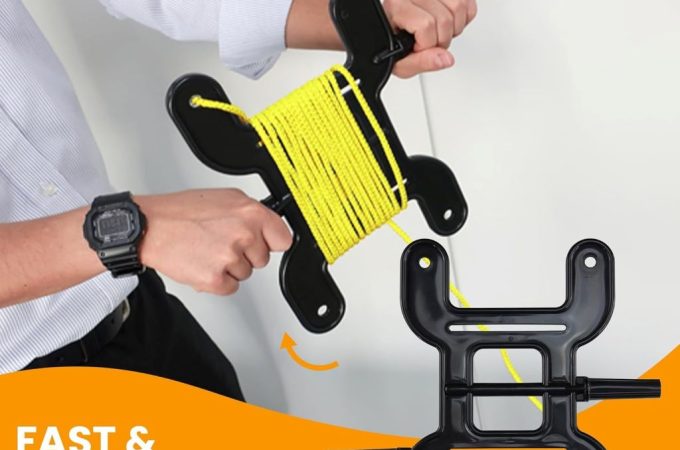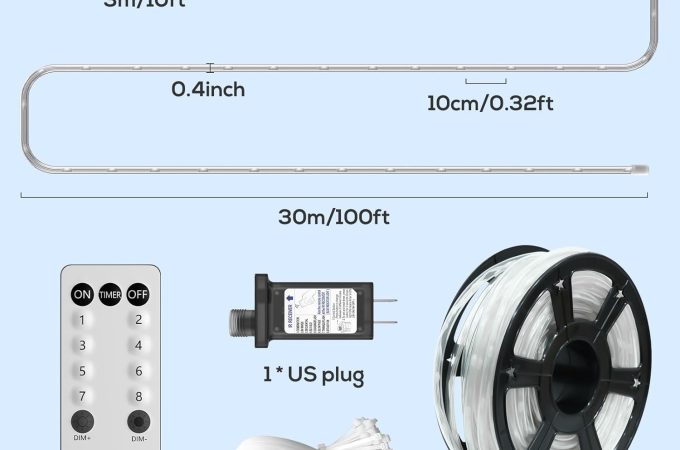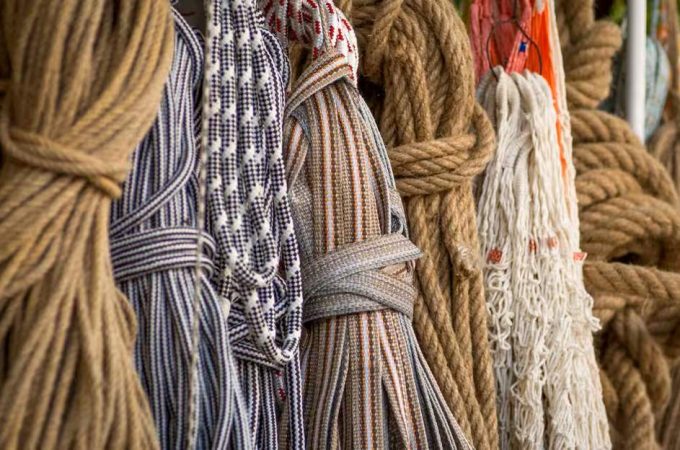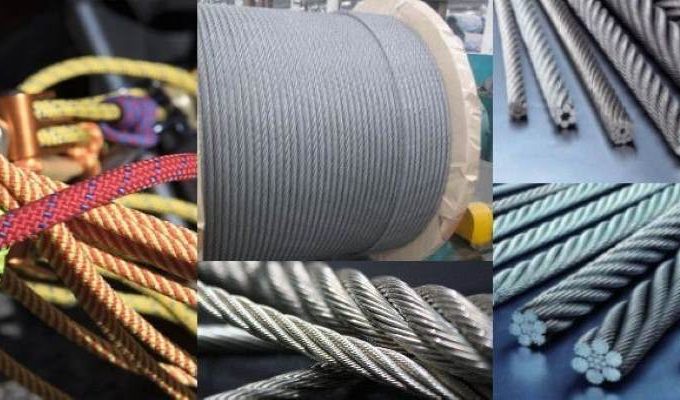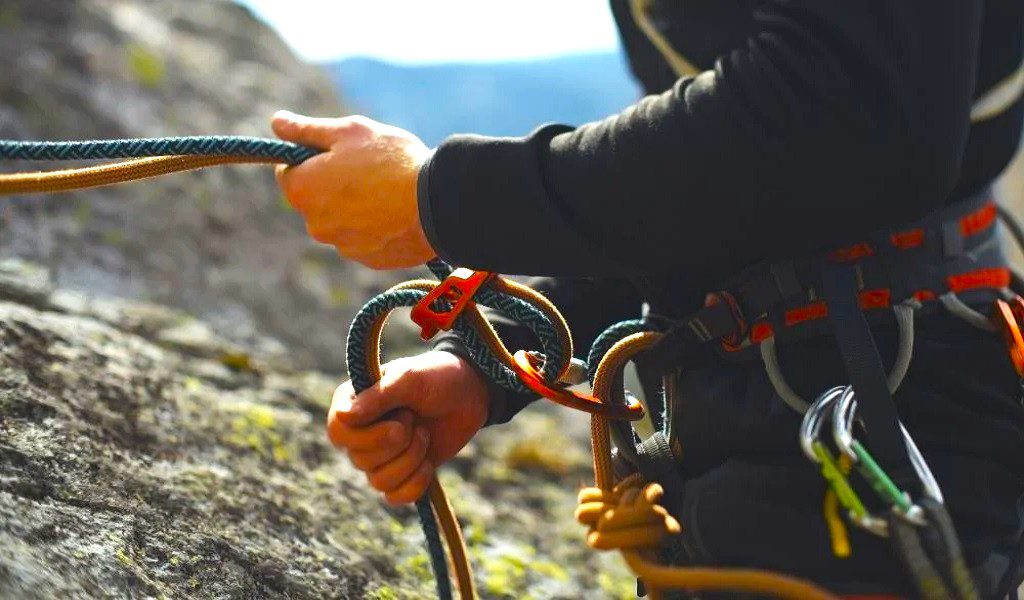
Rigging Rope: Unleash the Power of Quality and Strength
Rigging rope is a strong and durable rope used for various heavy-duty applications such as lifting and securing heavy objects. It is commonly made of synthetic fibers such as nylon or polyester and has a high tensile strength to withstand extreme forces.
Contents at a Glance
ToggleRigging rope is an essential tool in industries like construction, marine, and transport, where large loads need to be lifted or secured. This versatile rope is designed to handle heavy weights and provide reliable support, making it invaluable for tasks such as hoisting equipment, securing cargo, or setting up temporary structures.
Available in different diameters and lengths, rigging rope offers flexibility and adaptability to meet various rigging needs. With its exceptional strength and durability, rigging rope plays a crucial role in maintaining safety and efficiency in demanding work environments.
Rigging Rope Strength Essentials
When it comes to rigging rope, one of the most crucial aspects to consider is its strength. Rigging ropes need to be able to withstand heavy loads and provide optimal security. In this article, we will explore the essentials of rigging rope strength, focusing on the importance of material composition, the impact of fiber types on durability, and the strength-to-weight ratio.
Importance Of Material Composition
Material composition plays a vital role in determining the strength and reliability of rigging ropes. Different materials offer varying levels of performance and durability. Here are some commonly used materials:
| Material | Key Features |
|---|---|
| Nylon | Durable, high-elasticity, excellent shock absorption |
| Polyester | Excellent UV resistance, low stretch, high strength |
| HMPE | Ultra-high molecular weight polyethylene, lightweight, high strength, low stretch |
It’s crucial to select the material that suits your specific rigging needs. While nylon offers excellent shock absorption, polyester provides superior resistance to UV rays. On the other hand, HMPE ropes are known for their lightweight construction and low stretch properties. Understanding these material compositions will help you make an informed decision based on your rigging requirements.
Fiber Types And Their Impact On Durability
The choice of fiber type is another important consideration in ensuring the durability of rigging ropes. Here are three commonly used fibers:
- Manila: Made from abaca plant fibers, Manila ropes are valued for their strength and resistance to UV rays. However, they can be susceptible to moisture absorption and may deteriorate over time.
- Polypropylene: Known for its light weight and affordability, polypropylene ropes have excellent resistance to chemical solvents. However, they have relatively low UV resistance and may degrade under prolonged exposure.
- Polyester: With its high strength and exceptional resistance to UV rays, polyester ropes are a popular choice for rigging. They also exhibit minimal water absorption, making them suitable for marine environments.
Selecting the right fiber type is crucial for long-term durability and performance. The fiber you choose should align with your project requirements, considering factors such as exposure to sunlight, moisture, and chemicals.
Strength-to-weight Ratio In Rigging Ropes
In rigging applications, it’s essential to consider the strength-to-weight ratio of the ropes. This ratio indicates how much weight a rope can bear in relation to its own weight. A higher strength-to-weight ratio means a rope can handle greater loads while remaining lightweight.
Rigging ropes with a high strength-to-weight ratio offers numerous advantages. They reduce the overall weight of rigging systems, making them easier to handle and transport. Additionally, they provide higher tensile strength, ensuring enhanced safety and operational efficiency.
When selecting rigging ropes, consider the specific load requirements and opt for ropes that offer an optimal balance between strength and weight. This will help you achieve optimal performance without compromising on safety.
Unleashing Rigging Rope Potential
Rigging rope is a vital component of any rigging system, as it plays a crucial role in ensuring the safety and efficiency of various lifting and hauling operations. However, to unlock its full potential, it is important to understand the conditions for maximizing rope performance and the key performance indicators to look for. In this section, we will explore these aspects to help you harness the true capabilities of rigging rope.
Conditions For Maximizing Rope Performance
When it comes to getting the most out of your rigging rope, certain conditions need to be met. These conditions not only enhance its performance but also increase its longevity. Here are a few factors to consider:
- Proper storage and handling: Storing and handling rigging rope correctly is paramount to maintaining its strength and durability. Rope should be kept in a clean, dry, and well-ventilated area to prevent moisture accumulation and minimize the risk of deterioration. Additionally, avoiding sharp edges and abrasive surfaces during handling can prevent unnecessary wear and tear.
- Regular inspections: Periodic inspections are essential to identify any signs of damage or wear. Inspect the rope for frays, cuts, abrasions, or any other visible defects that might compromise its integrity. If any issues are detected, the rope should be repaired or replaced immediately to prevent accidents or failures during operation.
- Appropriate load limitations: Each rigging rope has a specific load capacity that should never be exceeded. Understanding the load limitations of your rope and adhering to them is crucial for preventing overloading and potential catastrophic failures. Consider the weight, angle, and dynamic forces involved in the lifting or hauling task to ensure the rope is not subjected to excessive stress.
- Proper cleaning and lubrication: Keeping rigging rope clean and properly lubricated is crucial for its smooth operation and longevity. Use gentle cleaning agents and brushes to remove dirt, grime, or debris, and apply an appropriate lubricant to reduce friction and protect against corrosion.
Key Performance Indicators For Rigging Ropes
Optimizing the performance of rigging rope requires understanding and monitoring key performance indicators (KPIs). These indicators provide valuable insights into the rope’s condition and help identify potential issues or areas of improvement. Here are some important KPIs to consider:
| KPI | Description |
|---|---|
| Strength | The maximum load the rope can bear without failure. |
| Elongation | The amount of stretch or lengthening the rope undergoes under load. |
| Abrasion resistance | The ability of the rope to withstand wear and tear when in contact with rough surfaces. |
| Chemical resistance | The resistance of the rope to chemical damage or degradation when exposed to certain substances. |
| UV resistance | The rope’s ability to withstand the damaging effects of prolonged exposure to ultraviolet (UV) radiation. |
Monitoring these KPIs through regular testing and inspection will help you gauge the performance and reliability of your rigging rope. By staying vigilant and addressing any deviations or concerns promptly, you can ensure the safe and efficient operation of your rigging system.
Quality Matters In Rigging Rope
In the field of rigging, prioritizing the quality of the ropes used is crucial. Quality matters not only in terms of safety but also the overall efficacy of the rigging process. In this section, we will explore how quality affects safety and efficacy, the lifecycle of high-quality rigging ropes, and the industry standards and certifications that ensure top-notch quality. Let’s dive in.
How Quality Affects Safety And Efficacy
When it comes to rigging operations, safety should always be the top priority. High-quality rigging ropes play a crucial role in ensuring the safety of the workers and the success of the operation. Here’s how quality directly impacts safety and efficacy:
- Strength and Durability: Quality rigging ropes are designed to withstand heavy loads and extreme conditions. These ropes are made from top-grade materials and are rigorously tested to ensure their strength and durability. This ensures that the ropes can handle the required load without compromising safety.
- Resistance to Wear and Tear: Rigging ropes encounter various wear and tear during their use. Low-quality ropes are prone to fraying, stretching, and breaking under stress, which can lead to accidents and failures. However, high-quality ropes are designed to withstand such conditions and maintain their integrity, decreasing accident risks and ensuring smooth operations.
- Consistency and Reliability: Quality rigging ropes are manufactured under strict quality control measures, ensuring consistent performance. Each rope is manufactured to meet industry standards and undergoes rigorous testing to ensure reliability. This consistency allows workers to trust the ropes and have confidence in their abilities during challenging rigging operations.
The Lifecycle Of High-quality Rigging Ropes
A high-quality rigging rope goes through a well-defined lifecycle that includes manufacturing, inspections, usage, and retirements. Understanding this lifecycle is crucial for maintaining the safety and efficacy of rigging operations:
- Manufacturing: High-quality rigging ropes are carefully manufactured using advanced techniques and quality materials. During this stage, strict quality control measures are followed to ensure that every rope meets the required standards.
- Inspections: Before being used in any rigging operation, high-quality ropes undergo thorough inspections to check for any defects or damages. These inspections include visual checks, measurements, and even non-destructive testing techniques.
- Usage: During the rigging operation, the high-quality rope is used as per industry-standard techniques and within its specified working load limits. Proper handling and maintenance are vital to ensure the continued safety and efficacy of the rope.
- Retirements: Over time, rigging ropes experience wear and tear, and they eventually reach the end of their service life. High-quality ropes are retired at the appropriate time, ensuring that they are not used beyond their safe operational limits. This prevents accidents and related risks.
Industry Standards And Certifications
To ensure the quality and safety of rigging ropes, various industry standards and certifications are in place. These standards and certifications guarantee that the ropes meet specific criteria, including material quality, manufacturing processes, and performance:
| Standard/Certification | Description |
|---|---|
| ISO 9001 | An internationally recognized quality management standard that ensures consistent quality in manufacturing processes. |
| ASME B30.9 | A standard that outlines the requirements for wire rope used in rigging operations, including design factors, inspection, and usage guidelines. |
| OSHA Compliance | The Occupational Safety and Health Administration sets guidelines and regulations for worker safety, including the use of safe and high-quality rigging ropes. |
By adhering to these industry standards and certifications, rigging companies can ensure that the ropes they use are of the highest quality, meeting the necessary safety and efficacy requirements.
Rigging Rope Maintenance Techniques
Proper maintenance of rigging ropes is essential to ensure their longevity and safe usage. By implementing regular inspection and following cleaning and storage best practices, you can significantly extend the life of your rigging ropes. In this article, we will walk you through these rigging rope maintenance techniques to help you keep your ropes in top-notch condition.
Regular Inspection For Sustained Quality
Regular inspection plays a crucial role in maintaining the quality of your rigging ropes. By carrying out these inspections, you can identify any signs of wear and tear, damage, or weakness that might compromise the safety and efficiency of your rigging operations. Here are some key aspects to consider during your regular inspections:
- Visual examination: Inspect the entire length of the rope for any visible signs of fraying, cuts, abrasions, or burning. Pay close attention to areas such as anchors, knots, or connections, as these are more prone to damage.
- Tactile evaluation: Run your fingers along the rope’s surface to detect any irregularities or deformities. Look out for flat spots, lumps, or inconsistencies in diameter, as they indicate internal damage.
- Flexibility and suppleness: Bend the rope to check its flexibility and suppleness. A rope that feels stiff or rigid may have undergone degradation and might not perform optimally.
- Load-bearing capacity: Ensure you are aware of the manufacturer’s guidelines regarding the maximum load capacity of your rigging ropes. Regularly check for any signs of weakened fibers or reduced load-bearing capabilities.
Cleaning And Storage Best Practices
To maintain the integrity and effectiveness of your rigging ropes, proper cleaning and storage are of utmost importance. Follow these best practices:
- Cleanliness: After each use, remove any dirt, debris, or contaminants from the rope’s surface. Use a soft brush or sponge with mild soap and warm water to gently scrub away the grime. Rinse thoroughly and allow the rope to air-dry completely before storage.
- Drying: Never leave your rigging ropes damp or wet, as this can lead to mold, mildew, and degradation. Ensure the ropes are completely dry before storing them.
- Storage conditions: Store your rigging ropes in a clean, dry, and well-ventilated area away from direct sunlight. Avoid exposing them to extreme temperatures or chemicals that may deteriorate the rope’s material.
- Coiling: Properly coil your ropes using the manufacturer’s recommended technique. This helps prevent kinks and tangles, ensuring easy handling and minimizing potential damage during storage or subsequent use.
- Protection: Consider using protective covers or sleeves to shield the rope from abrasion, UV rays, and other potential sources of damage.
By adhering to these rigging rope maintenance techniques, you can prolong the life of your ropes, enhance safety, and optimize their performance. Regular inspections and proper cleaning and storage practices will ensure that your rigging ropes remain reliable and effective, even in demanding work environments.
Navigating The Market For Rigging Rope
When it comes to rigging rope, navigating the market can be a daunting task. The sheer number of options available can be overwhelming, from different materials to varying lengths and strengths. To make the right choice for your rigging needs, it’s important to consider a few key factors. This guide will help you navigate the market by identifying reputable rigging rope manufacturers, understanding the balance between cost and quality, and exploring custom solutions for unique rigging needs.
Identifying Reputable Rigging Rope Manufacturers
Identifying reputable rigging rope manufacturers is essential to ensure you are purchasing a high-quality product that meets your rigging requirements. Reputable manufacturers have a proven track record of producing reliable and durable ropes that can withstand the rigors of demanding rigging tasks.
When looking for reputable manufacturers, consider the following:
- Years of experience in the industry
- Positive customer reviews and testimonials
- Compliance with industry standards and certifications
- Transparency in their manufacturing processes
Selecting a reputable manufacturer ensures you invest in rigging ropes that last and perform optimally, giving you peace of mind.
When selecting rigging rope, it’s important to strike a balance between cost and quality. While budget considerations are certainly important, opting for the cheapest option may result in sacrificing quality and compromising safety.
Consider the following factors when assessing the cost vs. quality in rigging rope selection:
- Material: Different materials have different performance characteristics and cost considerations. Determine the material that best suits your needs and budget.
- Strength: Evaluate the strength requirements of your rigging task. Choosing a rope with a strength rating that exceeds your requirements may result in unnecessary expenses.
- Longevity: Consider the lifespan of the rigging rope. A higher-quality rope may have a longer lifespan, which can offset the initial higher cost in the long run.
By carefully evaluating the cost and quality factors, you can select a rigging rope that offers the best value for your investment.
Custom Solutions For Unique Rigging Needs
Every rigging task is unique, and standard off-the-shelf solutions may not always meet your specific requirements. In such cases, exploring custom solutions can ensure that your rigging needs are met with utmost precision and safety.
- Working closely with rigging experts and manufacturers to understand your specific requirements
- Tailoring ropes to your desired length, strength, and material provides a customized solution.
- Applying advanced techniques and technologies to address unique rigging challenges
Choosing custom solutions ensures that you carry out your rigging operations efficiently and with the highest level of safety compliance.
In conclusion, navigating the market for rigging rope requires careful consideration of reputable manufacturers, cost vs. quality balance, and custom solutions for unique rigging needs. By applying these guidelines, you can make informed decisions that result in the optimal rigging rope choice for your requirements.
Frequently Asked Questions Of Rigging Rope
How Do You Choose The Right Rigging Rope For Your Project?
Choosing the right rigging rope involves considering factors such as load capacity, material strength, diameter, and durability. Assess your project requirements and consult with experts to make an informed decision.
What Are The Different Types Of Rigging Ropes Available?
There are various types of rigging ropes, including polyester, nylon, polypropylene, and aramid fibers. Each rope type has its own strength, flexibility, and load capacity characteristics. Understanding the properties of each type will help you choose the right one for your specific project.
How Often Should Rigging Ropes Be Inspected For Wear And Tear?
Regular inspections are crucial to maintain the safety and integrity of rigging ropes. Perform visual inspections before each use and conduct more thorough inspections at least once a year, or according to the manufacturer’s guidelines. Replace any ropes showing signs of wear or damage to prevent accidents.
Can Rigging Ropes Be Used In Outdoor Environments?
Rigging ropes are designed for both indoor and outdoor use. However, environmental factors such as UV exposure and moisture can degrade the rope’s strength over time. It is important to select ropes with suitable coatings or treatments to withstand specific outdoor conditions.
Conclusion
Rigging rope is an essential tool for various industries, providing strength, durability, and reliability. With its versatility and ability to withstand heavy loads, rigging rope ensures safety and efficiency in a wide range of applications. Whether you’re in construction, maritime, or any other field that requires heavy lifting and secure fastenings, investing in high-quality rigging rope is crucial.
So, make sure to choose the right rope for your specific needs, ensuring the utmost safety and productivity.

